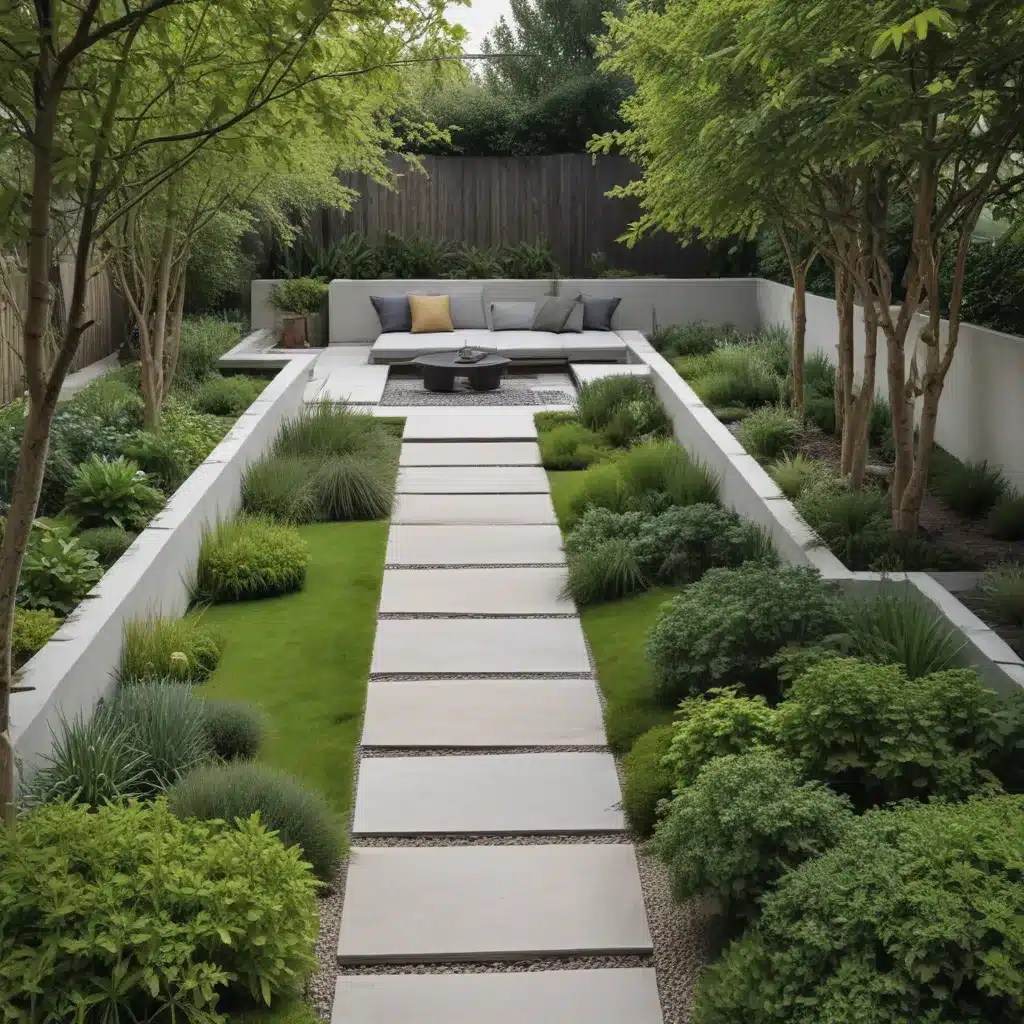
Finding Serenity in the Outdoors: A Minimalist Gardener’s Journey
As an avid gardener and design enthusiast, I’ve always been drawn to the understated elegance of minimalist garden styles. The idea of creating a calming, serene outdoor space that doesn’t demand constant maintenance and attention has always appealed to me. And when I stumbled upon the website of ABC Home & Building, a premier building and renovation company in Aberdeen, UK, I knew I had to share my insights on this captivating approach to garden design.
Minimalism Takes Root
Minimalist garden design, much like its counterpart in interior decor, is all about paring down to the essentials. It’s about creating a sense of calm and balance through thoughtful curation of materials, plants, and hardscapes. And contrary to popular belief, it’s not about creating a stark, lifeless landscape. Rather, it’s about finding the beauty in simplicity and allowing each element to shine.
As I’ve discovered through my Pinterest research, minimalist gardens often feature clean lines, muted color palettes, and a carefully curated selection of plants and materials. The focus is on creating a harmonious, serene atmosphere that invites you to pause, breathe, and connect with nature.
Designing for the Space
One of the key principles of minimalist garden design, as outlined in this Architectural Digest article, is to consider the architecture and style of your home. After all, the transition from indoor to outdoor space should feel seamless and cohesive.
For those of us with modern, minimalist homes, a minimalist garden can be the perfect natural extension of our living spaces. But even for traditional or eclectic homes, a well-executed minimalist garden can create a serene oasis that complements the overall aesthetic.
Choosing Materials and Plants
When it comes to materials, minimalist gardens often feature hardy, long-lasting elements that can stand the test of time. As the Houzz article suggests, materials like limestone, steel, and gravel can create a stunning, balanced composition that allows the plants to take center stage.
And when it comes to plant selection, the focus is on choosing species that provide structure, texture, and year-round interest. As the Ravenscourt Gardens blog post highlights, native plants like hollies, grasses, and perennials can create a stunning, naturalistic aesthetic that requires minimal maintenance.
Creating Boundaries and Layers
One of the hallmarks of a well-designed minimalist garden is the use of subtle boundaries and layers to create a sense of depth and visual interest. As I’ve seen on Pinterest, this can be achieved through the strategic placement of edging materials, the use of evergreen shrubs and trees, and the incorporation of contrasting textures and forms.
By carefully defining the edges of planting beds and hardscapes, you can create a sense of order and structure that allows the individual elements to shine. And by layering plants of varying heights and growth habits, you can add depth and visual interest without sacrificing the overall minimalist aesthetic.
Embracing the Outdoors
Perhaps the greatest joy of a minimalist garden is the way it invites you to embrace the outdoors and connect with nature. Rather than being a constant source of work and worry, a well-designed minimalist garden can become a serene, restorative oasis where you can escape the stresses of daily life.
As the team at ABC Home & Building can attest, the right minimalist garden design can transform your outdoor space into a true sanctuary – a place where you can sit back, relax, and simply enjoy the beauty of the natural world.
So if you’re ready to create your own slice of minimalist garden bliss, I encourage you to explore the resources and expertise offered by the team at ABC Home & Building. With their guidance and your own creative vision, you can transform your outdoor space into a true oasis of calm and serenity.
















